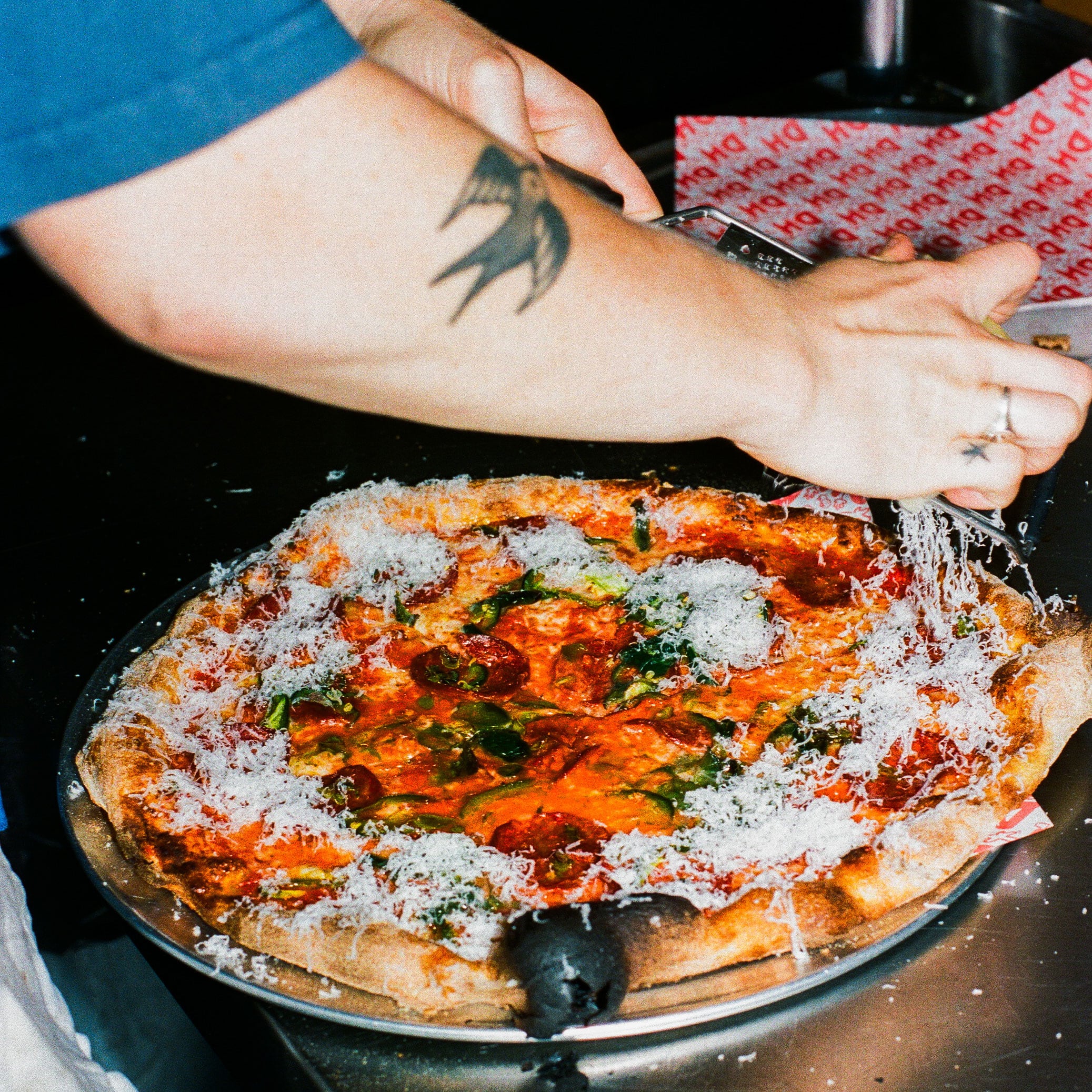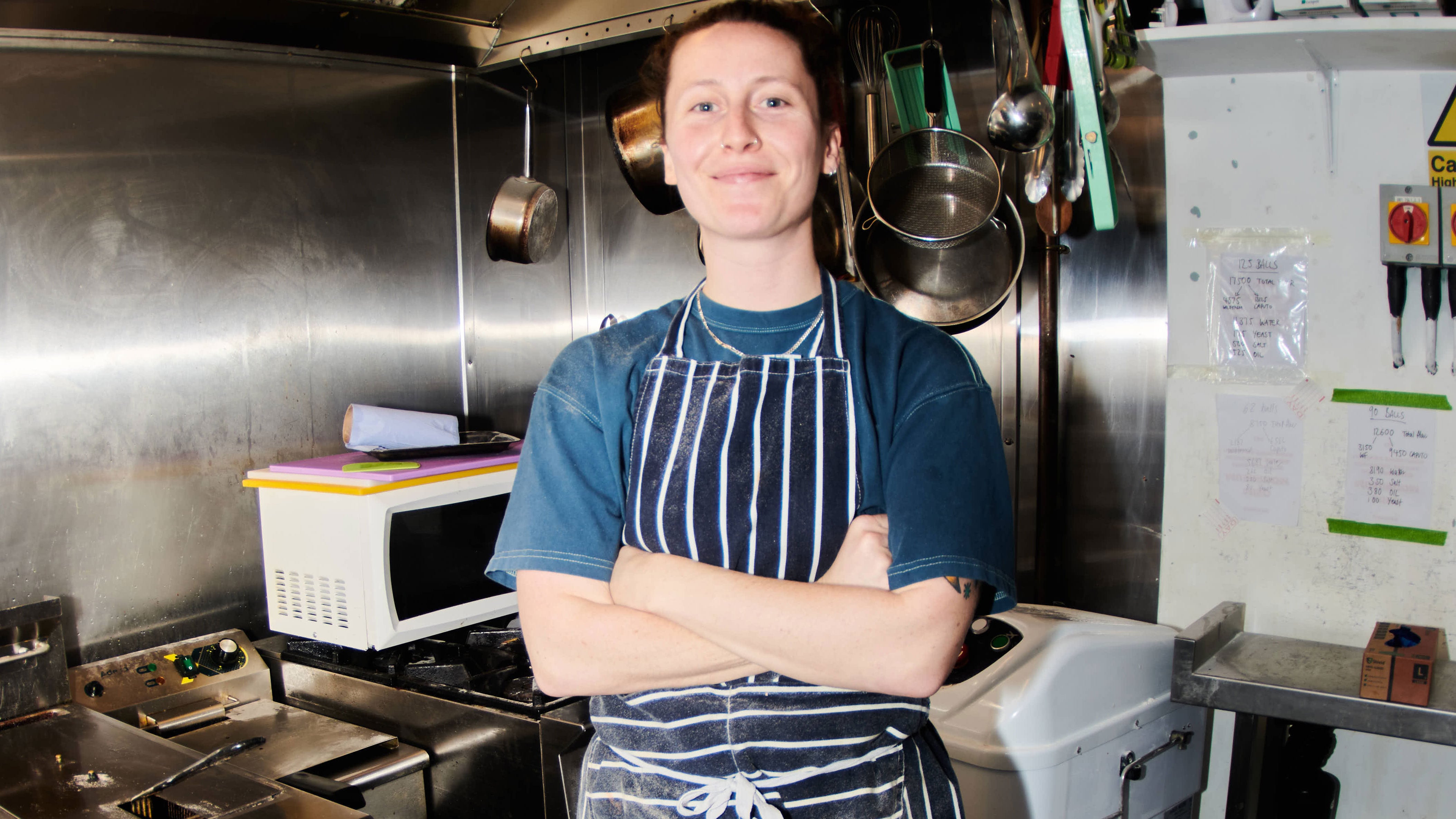What sort of pizza do you serve at Dough Hands?
It’s the sort of pizza that I want to eat. I never set out to make New York-style pizza but that is probably the style Dough Hands is closest too. It’s also been described as ‘London Pizza’, although that term means different things to different people. I like to get a proper char round the edges and the toppings are creative. Our current range includes squash with stracciatella, pickled scotch bonnet and sage brown butter; and aubergine ragu with scamorza, oregano and garlic breadcrumbs. We trade from The Spurstowe Arms in Hackney, and we will launch a second pizza kitchen at The Old Nun’s Head in Nunhead next month.
What sort of dough do you use?
We combine different flours from UK brands including Wildfarmed and Shipton Mill. We have to mix and match because the flours that have a superior taste aren’t usually that strong, so we need to supplement them with higher protein flours. The dough is cold fermented for up to three days which makes it nice and light and also develops the flavour.
What’s behind the rise in all these new pizza styles that are less connected to Italy?
More and more people are opening pizza places that aren’t Italian so there is less of a pull in that direction. Alongside this, the public have had that style of pizza for a long time so there is now an appetite for something different. My problem with Neapolitan is that it comes with so many rules attached to it. It can be a little stiff and the menus at Neapolitan pizzerias can be samey.

Why have you gone for the pub residency model?
It just works well for me at the moment. It’s low investment and low risk. The pubs simply take a proportion of my turnover. Eventually I want to have my own spot. My ideal site would be a fun little gay bar that serves pizza. Eating pizza in a restaurant feels dated. For me, pizza is something that’s ordered spontaneously and never eaten with a knife and fork.
How did you become a pizza chef?
I went to university in Brighton and ended up working front of house at a place called Pizzaface (in Brighton) . It’s a bit of an OG on the scene because it was among the first to come up with creative toppings and serve a style of pizza that was distinct from places like Domino’s and also the Italian chains. I stayed there for about five years before going travelling, which included a spell working at a great pizza place in Sydney that was big on high quality ingredients imported from Italy.
But you then changed careers…
Yes. I worked in advertising account management for a few years. It was fun but it wasn’t really what I wanted to do. When Covid hit I was put on furlough and opened a little stall in Brixton. The spot wasn’t so good, but it was a good chance to test things out. That led to a few markets and pop-ups. In 2023, I quit my job in advertising to focus on pizza and did my first pub residency.
How is female representation in pizza kitchens?
Not great. When I worked at Pizzaface around 2011 they had never had a female chef before and some of the guys who were working there were sceptical as to whether I could do it. All these years later you still don’t see many female pizza chefs. It may have something to do with the fact that a lot of the pizza chefs in the UK are from Italy and that making pizza is considered a man’s job over there even more so than it is here. I have employed one or two women to make pizza, but my team is currently just boys. I would love to run a women-only kitchen but as a small business you’ve got to take good chefs when you get them.


